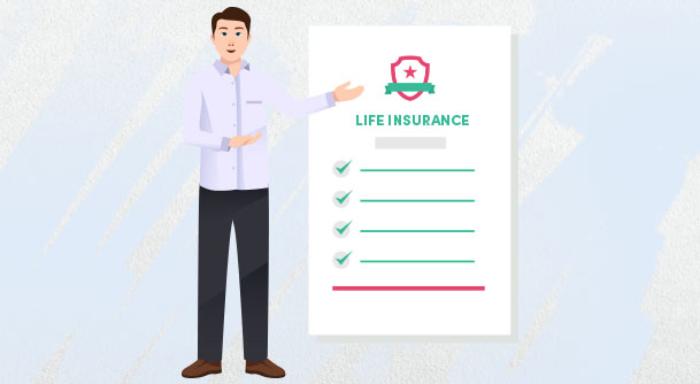Simplify and Evaluate Life Insurance Policies
Blog Title
670 |
2/11/25 8:30 AM |
How to Simplify and Evaluate Multiple Life Insurance Policies
Our financial obligations also change as life unfolds. You may be balancing many life insurance plans that you bought at different times to achieve different objectives. However, managing multiple policies can become overwhelming as life presents various challenges.
Let's look at how you could streamline your life insurance policies and ensure each policy does its intended function. Reviewing and simplifying your plans may decrease complexity and ensure that your coverage meets your financial demands.
Why Do We End Up with Multiple Policies?
Having several life insurance plans is something that many of us don't intentionally want to do, but it does happen eventually. When you purchased your first house, you may have begun with a term insurance policy before adding a ULIP to increase your wealth.
You could have later purchased new insurance to address evolving financial demands or to obtain additional coverage via your employer. This way, you could end up with several policies. And sometimes these policies may conflict with or no longer suit your way of life.
Steps to Simplify Your Life Insurance Portfolio
1. List All Your Policies with Their Details
Getting organised is the first step. Make a note of all the life insurance policies you own, whether they were bought individually or via your company. Important information should be noted for each one, including the insurance type (term, whole life, or ULIP), the coverage amount, the premium, and the length of the term. You will better understand your current situation if you have all this information organised in one place.
Let's say you own a whole life policy, a ULIP, and term insurance; you may determine whether there are any coverage gaps or overlaps between these plans by listing them.
2. Compare Your Policies’ Coverage with Your Financial Goals
Once the whole picture is in front of you, stand back and evaluate your present financial objectives. Your life insurance should support you in reaching your financial objectives and represent your current life stage.
Your coverage should, for instance, concentrate on replacing your income and safeguarding your loved ones in the event of your death if you're still young and beginning a family. However, your demands may change as you get closer to retirement to secure your future, pay for medical expenses, or ensure your retirement goes smoothly.
Reflect for a moment about how well each policy fits your objectives. If you've purchased several policies over the years, considering whether the overall coverage is appropriate or excessive is worthwhile.
Ask yourself: Is it necessary to have as much coverage as you had when your kids were younger? Or, if your children have grown up, is it possible to lower your coverage and save money on premiums?
3. Categorise Your Policies (By Type or By Purpose)
Sort your life insurance plans into categories such as term, whole life, and ULIP, or by purpose, such as retirement, investment, or protection, to make things more understandable. This will enable you to determine which policies are accomplishing their goals and which may be unnecessary.
For example, If you have a ULIP that also serves as an investing instrument and a term life insurance policy that replaces your income, classifying them in this manner enables you to determine if you need both or if one policy is enough to fulfil your needs.
4. Streamline Policies (Remove Redundant Ones)
Streamlining your policies is essential once you've examined and classified them. Check for unnecessary coverage or plans that don't meet your current needs. For example, you could have bought several term plans throughout the years, but one might be enough to protect your family. In addition to saving money on premiums, fewer policies will help to simplify portfolio management for your life insurance.
However, be careful, as significantly reducing your coverage could leave you vulnerable to other challenges. Always ensure that the remaining insurance provides adequate protection for you and your loved ones.
5. Use Digital Tools or Professional Help
If you are overwhelmed by streamlining your life insurance portfolio, seek expert assistance. Financial advisers may provide professional advice on assessing plans, spotting coverage gaps, and recommending more cost-effective solutions.
As an alternative, internet resources and digital tools can assist you in tracking your coverage and comparing various life insurance plans. Numerous financial websites and insurers provide tools to examine your plans, evaluate prices, and identify the best solutions given your financial circumstances.
Common Mistakes to Avoid
Be mindful of these typical errors while streamlining your life insurance portfolio:
Over-Cutting Coverage: Avoid drastically reducing your coverage to simplify your plans. It's essential to maintain adequate protection for your loved ones.
Removing Policies Without Proper Consideration: Never cancel policies without fully understanding the consequences. In some cases, you may face penalties or lose important benefits.
Ignoring Policy Riders: Consider riders such as accidental death benefits or critical illness coverage when assessing policies.
Ignoring Tax Repercussions: Some life insurance policies, including ULIPs, offer tax benefits. Be aware of the potential impact that portfolio changes may have on your tax status.
Final Thoughts
Multiple life insurance policies might seem intimidating at first, but with a structured approach to simplifying and evaluating them, you can transform it into an empowering financial decision. Remember, your insurance should serve you and not complicate your life, so don't be afraid to review and remove anything that isn't helping you!
Consult a financial expert if you're not sure. Ultimately, life insurance is a commitment to safeguard your loved ones, which requires careful preparation. You can experience peace of mind knowing that your financial future is secure if you keep things simple and pertinent.










